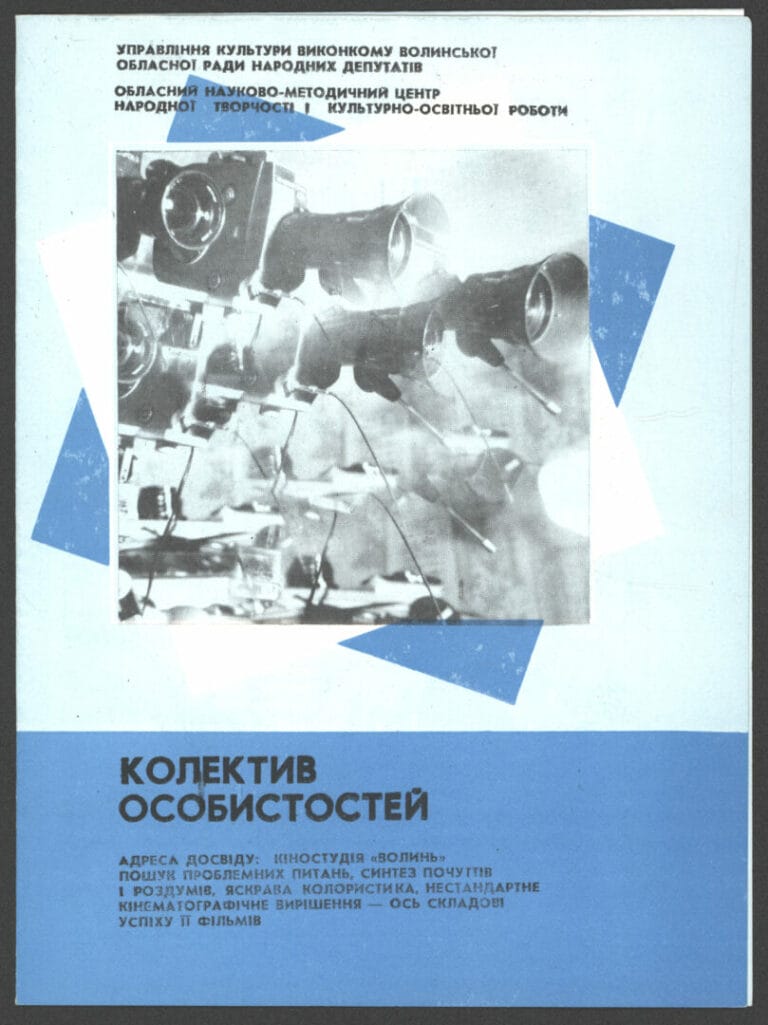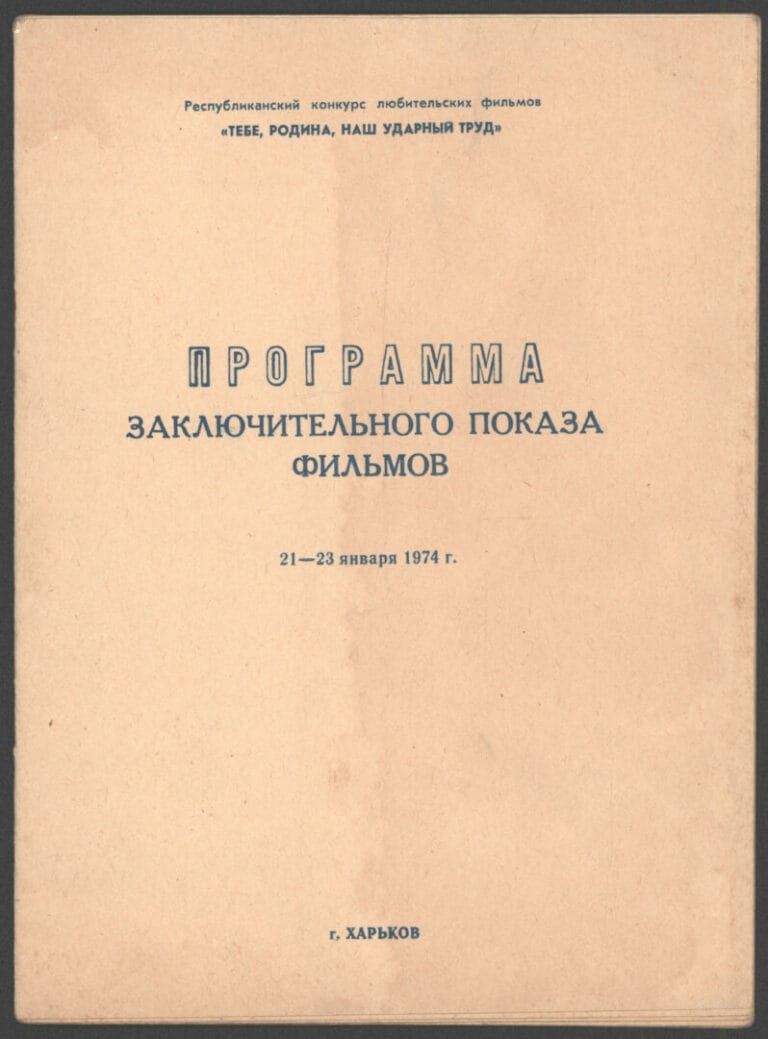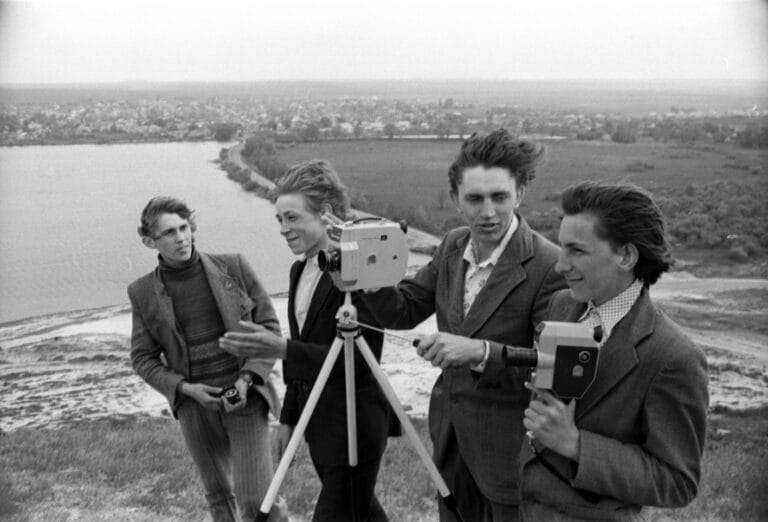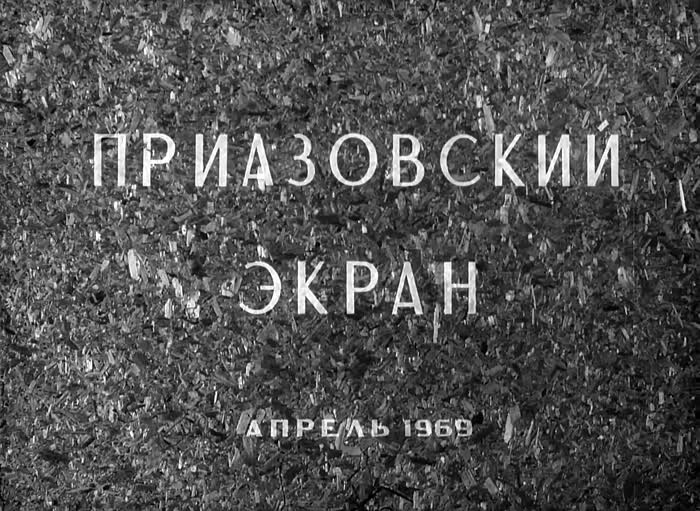[00:48:02 – 00:52:43]
Natalia Otrischenko: Could you tell us about the environment and people you worked with?
Roman Buchko: These individuals held various positions, engaging in a form of amateur activity. There was a methodologist for cinema and photography at the House of Folk Art, overseeing cultural affairs. Additionally, there was a people’s film studio in Drohobych under [the direction of] Adam Kotsko, and another in Stryi, something like Forward Ginseng Growers [Вперед женьшеньоводи], well, they produced films on topics of their interest. Those affiliated with trade unions mostly initiated such film studios. Bordiuk, for instance, was one such individual who had completed his studies at the Leningrad Institute through correspondence. He grew up in […], don’t really remember where […]. We also coordinated a festival on tourism, although it primarily featured slide films since not everyone had a camera. Anyway, these slide films were like movies, but static in the frame. There was often a soundtrack and sometimes these frames were coupled to eliminate pauses in between, it went seamless. The visuals were captivating, some background music, we saw bicycle trips or visits to the Baltic States. There were seven tourist sections including water workers, miners, cavers, cyclists, and more. This festival was held at the Tourist Hotel.
And those from places like Zvenyhorod—where I was born—were also involved. I had a keen interest in archaeology from a young age and documented everything for the Society for the Protection of Monuments, where I later worked. People passionate about such topics also contributed to the festival. When I was filming there, I pondered what I will capture. I persuaded to film there. It was believed that establishing a new film studio would be a significant accomplishment for the entire film club [Film Club of the House of Culture of Builders]. We had a leader for the cinema club, and a small avtovaz, which we used to travel to film various scenes around. We would venture near Belarus to film about wild honey and the beekeepers, including Uncle Tereshko, who made honey in Kolody with his bees. We had to move through many swamps for this footage.
So, there were approximately four officials in the film club. To secure funding for projects, we needed to show it functioned, but actually, it had achieved notable milestones and had to get a rank of “People’s Studio.” We were to receive an allocation of 120 rubles, and with this prize money, we could purchase basic equipment such as a camera, projector, tape recorder, and occasionally film, along with the necessary chemicals for film processing. There was a teacher Bohdan Zakalyk who I would assist in preserving those historical records. It might be stored somewhere. However, when it came to formalizing the existence of the studio, I had to use fake names for the participants. Like those films I made were, actually, co-authored, just to validate everything in official papers. Then we made a film project in Neslukhiv. We wanted to shoot a documentary about pomology, about 25-year history of gardening. By the way, we never completed the film. But we engaged Borovsky to add other films about nature to our list, so that to formally validate our finance. Borovsky himself had previously worked on projects in the area, as had Zakalyk and others. This was the atmosphere. There were a few dedicated persons who always watched these films; only the authors themselves, very few people attended screenings of these films, even at the republican festival.







Comment will follow…